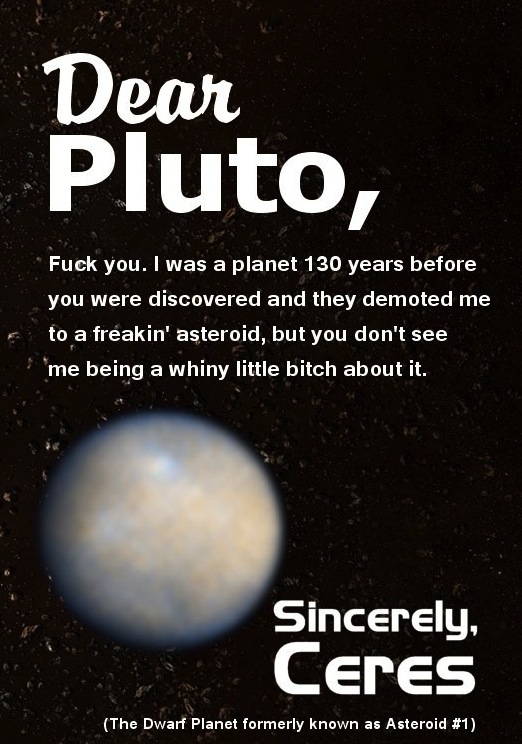Link
Ceres was a planet before Pluto and demoted from a planet along time ago. The creation of the Dwarf Planet elevated its status back up. I'd like to see it get a little more love. Maybe it'll never get as much attention as Pluto, but I think it should be in the same category.
Located in the asteroid belt between Mars and Jupiter, Ceres is the largest unexplored space rock in the inner solar system. But that distinction ends Friday, when NASA's Dawn spacecraft arrives after nearly an eight-year journey, which included a stopover at the asteroid Vesta.
...
THE IDENTITY CRISIS
Located about 250 million miles from the sun, Ceres was deemed a comet when it was first discovered. Then it was promoted to a planet and later downgraded to an asteroid. Since 2006, it has been classified as a dwarf planet like Pluto, the one-time ninth planet. Dwarf planets are spherical in shape like planets, but they share the same celestial neighborhood with other similar-sized objects.
THE BRIGHT SPOTS
Ceres — with a diameter of about 600 miles — is thought to have a rocky core surrounded by an icy mantle. Long ago it might have harbored an underground ocean. As Dawn approached Ceres, it spotted a pair of puzzling bright spots inside a crater. Scientists think the shiny dots may be exposed ice or salt.
Ceres was a planet before Pluto and demoted from a planet along time ago. The creation of the Dwarf Planet elevated its status back up. I'd like to see it get a little more love. Maybe it'll never get as much attention as Pluto, but I think it should be in the same category.


